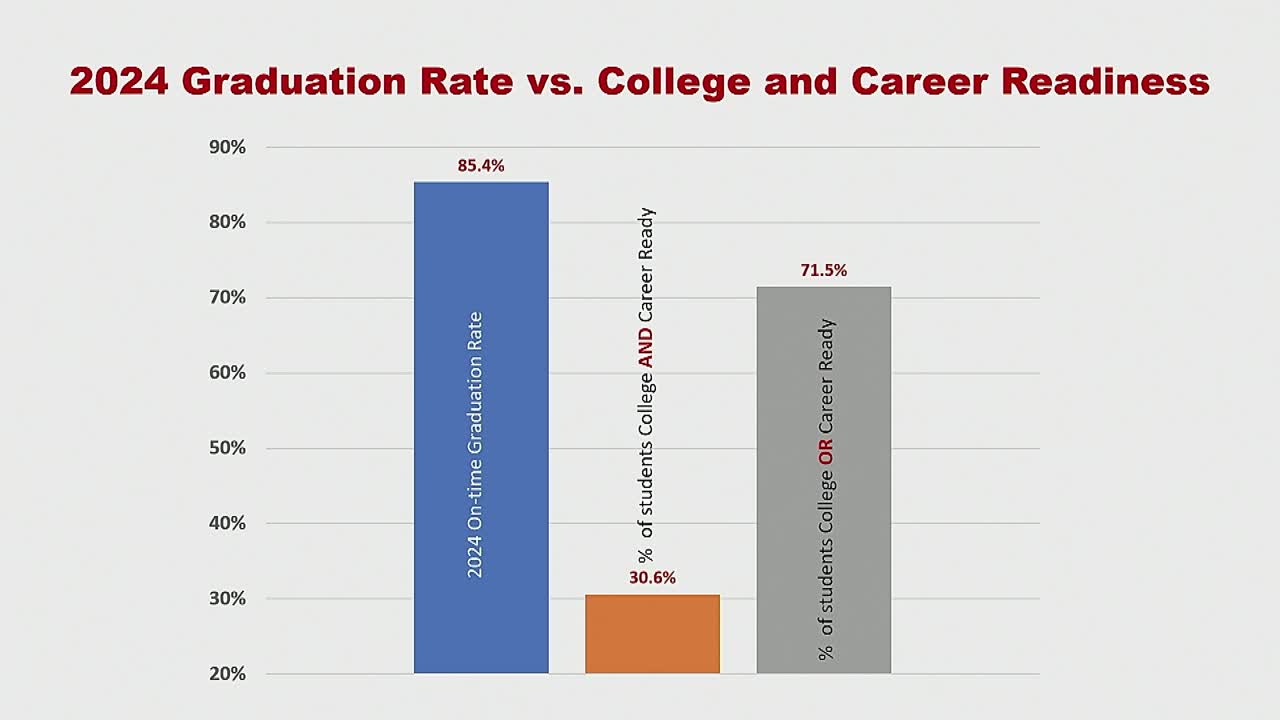South Carolina reports 85% high school graduation rate with only 72% college ready
April 29, 2025 | 2025 Legislative Meetings, South Carolina
This article was created by AI summarizing key points discussed. AI makes mistakes, so for full details and context, please refer to the video of the full meeting. Please report any errors so we can fix them. Report an error »

In a recent meeting of the House Labor, Commerce and Industry Committee's Banking and Insurance Subcommittee, significant discussions centered around the state of education in South Carolina, particularly focusing on high school graduation rates and student readiness for college and careers.
The meeting revealed that the graduation rate for the class of 2024 stands at 85.4%, indicating a positive trend in the number of students completing high school on time. However, a concerning statistic emerged: only 72% of these graduates are deemed "college and career ready." This means that while students are graduating, a substantial portion lacks the necessary skills and credentials to succeed in higher education or the workforce.
Committee members expressed alarm over these figures, questioning the effectiveness of the current educational system. One member highlighted that if only 30% of graduates are prepared for the next steps in their lives, it raises serious concerns about the value of a high school diploma in South Carolina. The discussion emphasized the need for a more rigorous curriculum that aligns with the demands of post-secondary education and the job market.
The committee also introduced a new dashboard aimed at providing transparency and data on educational outcomes. This tool allows stakeholders to analyze performance metrics, including chronic absenteeism, which affects academic success. In the 2022-2023 school year, 23% of students were classified as chronically absent, further complicating efforts to improve educational outcomes.
As the committee continues to address these challenges, they are committed to refining the accountability system and ensuring that students leave high school with valuable credentials. The meeting underscored the urgency of these discussions, as the future of South Carolina's students depends on effective educational strategies and support systems.
Moving forward, the committee plans to engage further with stakeholders to explore solutions that will enhance student readiness and overall educational quality in the state.
The meeting revealed that the graduation rate for the class of 2024 stands at 85.4%, indicating a positive trend in the number of students completing high school on time. However, a concerning statistic emerged: only 72% of these graduates are deemed "college and career ready." This means that while students are graduating, a substantial portion lacks the necessary skills and credentials to succeed in higher education or the workforce.
Committee members expressed alarm over these figures, questioning the effectiveness of the current educational system. One member highlighted that if only 30% of graduates are prepared for the next steps in their lives, it raises serious concerns about the value of a high school diploma in South Carolina. The discussion emphasized the need for a more rigorous curriculum that aligns with the demands of post-secondary education and the job market.
The committee also introduced a new dashboard aimed at providing transparency and data on educational outcomes. This tool allows stakeholders to analyze performance metrics, including chronic absenteeism, which affects academic success. In the 2022-2023 school year, 23% of students were classified as chronically absent, further complicating efforts to improve educational outcomes.
As the committee continues to address these challenges, they are committed to refining the accountability system and ensuring that students leave high school with valuable credentials. The meeting underscored the urgency of these discussions, as the future of South Carolina's students depends on effective educational strategies and support systems.
Moving forward, the committee plans to engage further with stakeholders to explore solutions that will enhance student readiness and overall educational quality in the state.
View full meeting
This article is based on a recent meeting—watch the full video and explore the complete transcript for deeper insights into the discussion.
View full meeting